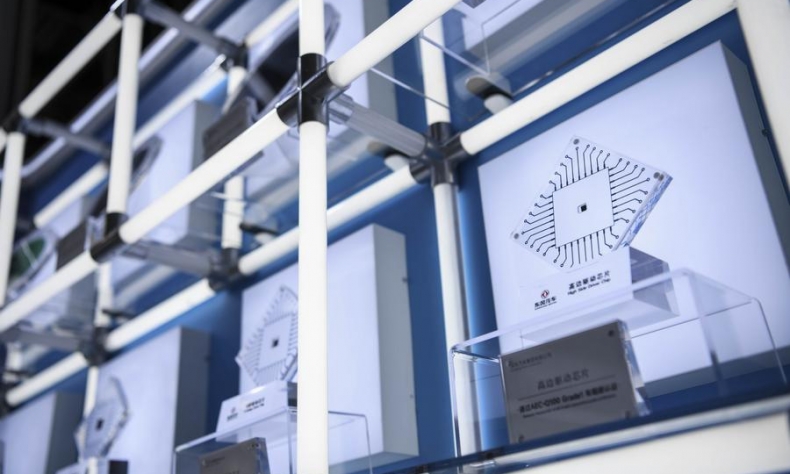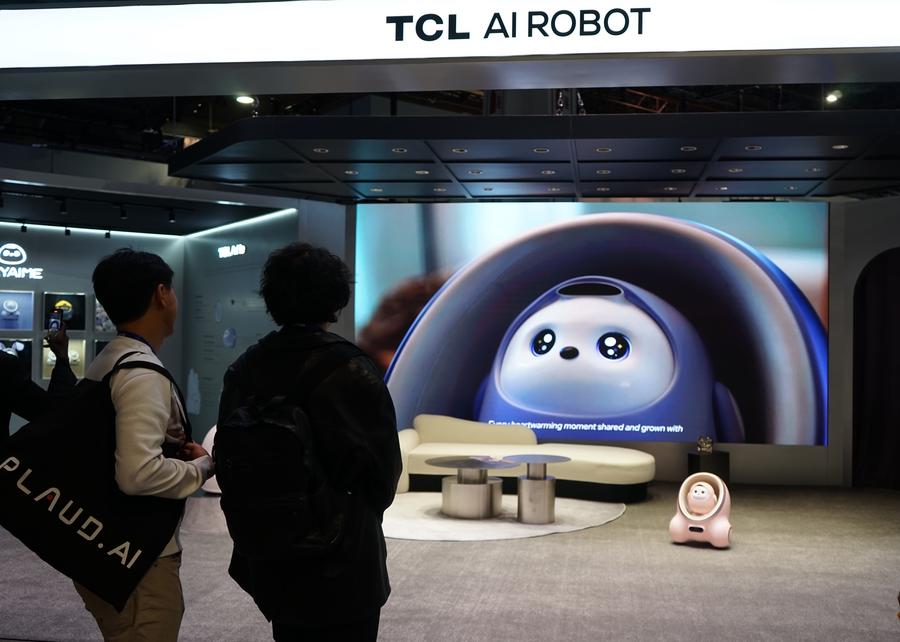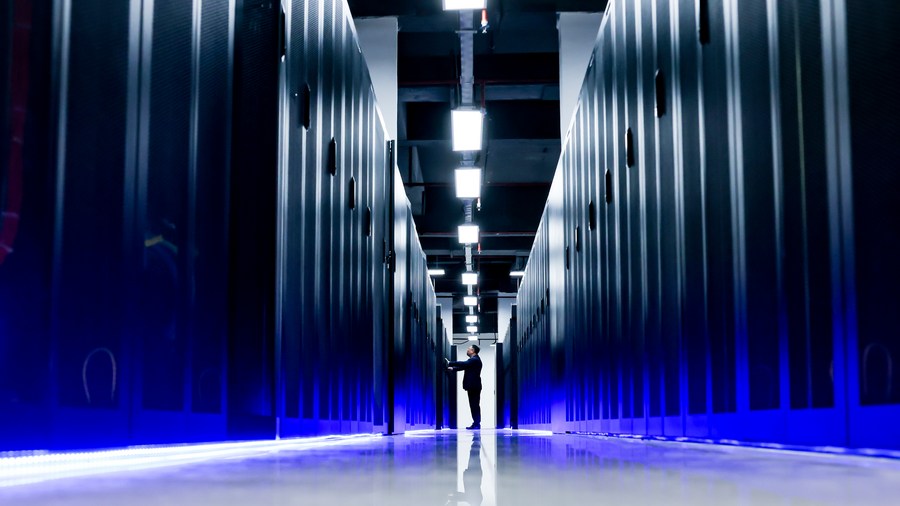The Shaping of Future Technology Sovereignty and AI Leadership

As neither can maintain long-lasting dominance of the global AI industry, China and the U.S. should join hands to maximize the AI benefits for mankind.
Chinese artificial intelligence company DeepSeek is shaking up the global AI industry with the release of its latest model DeepSeek-V3, emerging as a big dark horse in the open-source large language model (LLM) arena. In particular, the model offers comparable performance to competitors like Claude 3.5 Sonnet, GPT-4 and Gemini 1.5 Pro at a significantly lower operational cost.
This remarkable achievement highlights DeepSeek’s growing influence within the global AI ecosystem. As noted by the Center for Strategic and International Studies (CSIS), a Washington-based think tank, while the U.S. remains a dominant force in AI, China is rapidly closing the gap, positioning itself to lead in AI innovation by 2030. There is mounting evidence that the U.S.’s increasing technological barriers are inadvertently accelerating China’s path to achieving greater technology sovereignty, further emphasizing the importance of a robust, self-reliant AI ecosystem.
The global AI ecosystem is increasingly defined by the interplay of three essential elements: chips, data and energy. These components form the backbone of the AI ecosystem and are at the heart of the ongoing competition to secure future leadership.
Chips: the heart of advanced AI models
AI systems require specialized chips, like Nvidia’s advanced processors, to function. For example, Nvidia’s H100 processor is a critical component for powering OpenAI and other sophisticated AI models. Unsurprisingly but regrettably, the U.S. Bureau of Industry and Security (BIS) banned exports of Nvidia’s H100 processor to China in 2022. Additionally, ASML has been prohibited since 2018 from transferring its most advanced chipmaking equipment to China. The “chip war” intensified in 2023 when the BIS extended its restrictions to Nvidia’s A800 and H800 chips — scaled-down versions of the H100 and former bestsellers in China — spurring Chinese tech giant Huawei to develop its own Ascend 910B chip.
The escalation continued on Dec. 2, 2024, when the U.S. Commerce Department added 140 Chinese semiconductor manufacturers and related technology firms to its Entity List.
Despite DeepSeek-V3’s advance of China’s AI goals, the model depends on Nvidia’s H800 chip — a premium processor that may prove inaccessible amid tightening tech restrictions. The company must solve this chip dependency to ensure its future growth.

In response to U.S. sanctions, China has pursued both geoeconomic measures and semiconductor self-sufficiency. A notable example is Huawei’s self-developed Ascend 910B chip, manufactured by the Chinese mainland’s leading foundry SMIC rather than Taiwan’s TSMC. The chip works with ready-to-use AI packages that combine processors and specialized software, offering companies cheaper alternatives to Nvidia’s products. In addition, Huawei’s forthcoming 910C chip reportedly rivals Nvidia’s H100 in performance.
Chinese companies like Huawei are catching up with Western rivals in AI technology, challenging U.S. dominance in advanced computing, a development that Nvidia CEO Jensen Huang acknowledged, saying, the U.S. firm faces “a lot more competition in China now.”
Energy: powering the AI revolution
Nuclear power drives AI technology, and while the U.S. leads with 94 reactors to China’s 55, the gap is closing. China has built 23 reactors in the past decade, matching what the U.S. has accomplished in the previous 40 years. Alarmed by China’s growth, the U.S. is expanding its nuclear power sector to support AI technology, drawing on decades of naval reactor experience. Goldman Sachs says U.S. data centers will need an additional 47 gigawatts of power by 2030, split between natural gas and renewable sources. American tech companies aren’t waiting. Amazon bought a nuclear-powered data center and is developing small reactors, while other firms strike deals with energy suppliers. In China, much attention is given to its AI energy supply as well, as showcased by Alibaba’s effort to run its AI centers on clean energy by 2030.
Data: the backbone of AI innovation
AI systems need massive amounts of data to work, making modern data centers crucial for tech advances. The rapid adoption of generative AI and other data-intensive technologies has fueled a global surge in data center construction. Tech giants run their own massive “hyperscale” data centers rather than sharing space in traditional facilities. These hyperscale centers offer far more computing power for AI systems than older shared facilities. The push to build these centers has become a global race, with nations viewing them as key to future tech leadership.

Alibaba now runs more than 80 data centers worldwide, with locations in the Chinese mainland, Hong Kong, Singapore, the U.S., Europe, the Middle East and Japan. Amazon Web Services leads the hyperscaler industry with 126 global sites, followed by Microsoft Azure, Google Cloud Platform, IBM Cloud, Alibaba Cloud, Oracle and Tencent Cloud. Analysts expect hyperscale data centers to increase from 523 to 738 by 2030 as AI demands grow.
Beyond hard power: AI global governance
In order to maintain its AI dominance through rules, standards and alliances, the U.S. seeks partners who share its approach to AI development and control. In November 2024, OpenAI proposed the establishment of a “North American Compact for AI,” aiming to expand into a broader “global network of U.S. allies and partners” to streamline talent access, secure financing and fortify supply chains for advancing AI technologies
Meanwhile, China is ready to engage with all countries on AI capacity-building cooperation and proposed the AI Capacity-Building Action Plan for Good and for All in September 2024. It has also launched the Artificial Intelligence Global Cooperation Alliance (AIGCA) in Shanghai. Emphasizing global AI cooperation, AIGCA prioritizes accessibility to talent, knowledge exchange, financing and the promotion of AI products among member companies.
Conclusion: China and the U.S. should work together
The U.S. remains firmly in the lead across the three key elements of the AI ecosystem. However, China has emerged as a resilient contender, steadfastly carving out its place amid socio-political and geopolitical challenges. The U.S. comprehensive use of chokepoints in AI development — through export controls, technology restrictions and market access limitations — has merely accelerated the development of China’s indigenous chip sector and its strategic coordination.
As neither can maintain long-lasting dominance of the global AI industry, the two countries should join hands to maximize the AI benefits for mankind. As U.S. President-elect Donald Trump said at a press conference at Mar-a-Lago last month, China and the U.S. could work together to solve all of the problems of the world. In the spirit of this statement, the U.S. should stop its trade and tech sanctions against China and open itself for exchanges and cooperation on AI governance as well as AI research and development. If so, it will bring about unprecedented benefits to the two nations and the world at large. For example, according to African Union estimates, AI could contribute between $110 billion and $220 billion to the continent’s economy a year, stimulating innovation and generating new jobs. Let’s keep our fingers crossed.
Li Xuan is an assistant professor at the Global Institute for Zhejiang Merchants Development at Zhejiang University of Technology and a member of the Zhejiang Development and Security Research Think Tank Alliance. She has served as a policy consultant for the Organization for Economic Cooperation and Development (OECD).
Li Xing is a professor at the Guangdong Institute for International Strategies at the Guangdong University of Foreign Studies and an adjunct professor at Aalborg University in Denmark.
 Facebook
Facebook
 Twitter
Twitter
 Linkedin
Linkedin
 Google +
Google +










